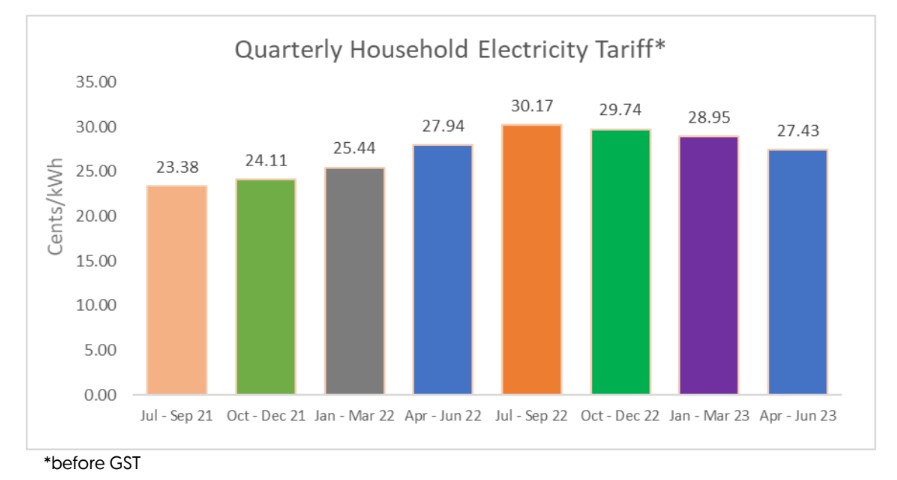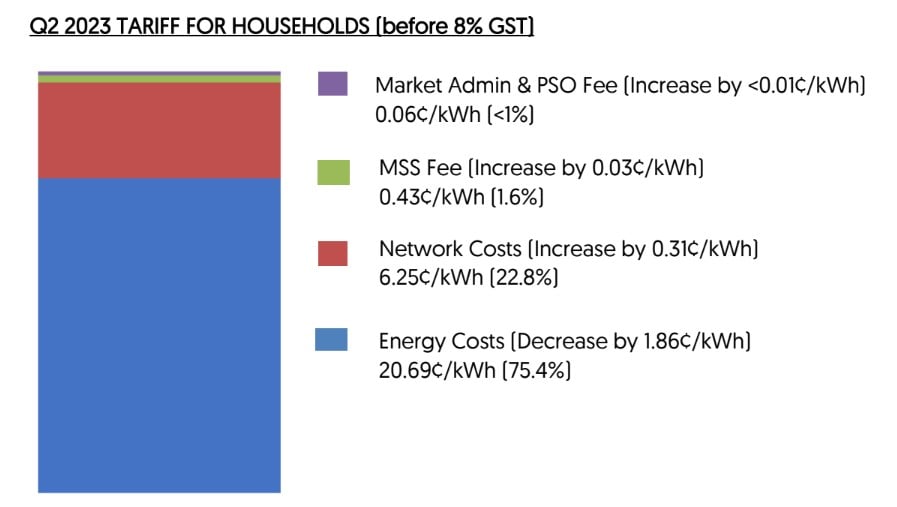Singapore Household Electricity Bills Will Decrease By 5.3% For Second Quarter Of 2023
Although many of us have switched to a hybrid work arrangement and are returning to our workplaces, spending long hours on our devices at home still contributes to higher electricity consumption.
Well, you won’t have to worry too much about costs as household electricity bills for April to June will decrease by 1.51 cents per kWh compared to the first quarter of the year. This translates to a 5.3% fall in electricity tariff prices.
The fall can be attributed to lower prevailing energy costs compared to the previous quarter.
Electricity bills for households to decrease from 1 Apr to 30 June
SP Group shared in a media release that electricity tariffs before GST will decrease from 28.95 cents to 27.43 cents per kWh until 30 June.
For families residing in a typical four-room HDB flat, the average monthly electricity bill will decrease by S$4.69, before 8% GST.
This quarter’s fall in tariff prices marks the third consecutive quarter that household electricity tariffs have fallen.

Source: SP Group
The decrease comes after SP Group’s quarterly review of electricity tariffs, based on guidelines set by the electricity industry regulator, Energy Market Authority (EMA).
If you’re thinking of planning ahead and budgeting for the quarter, here’s a breakdown of the estimated new average monthly bills for different household types:

Source: SP Group
According to the estimates, bungalow owners may see savings of as much as S$29.46 monthly, compared to the first quarter.
Comparatively, HDB flat owners will see decreases ranging from S$1.84 to S$6.75 a month.
Multiple factors at play in determining electricity tariffs
Some may wonder why there are changes to the electricity bills, and how the tariffs are computed.
SP Group revealed in their media release that the tariffs consist of four components:
- Energy costs
- Network costs for transporting electricity through the power grid
- Market Support Services Fee
- Market Administration and Power System Operation Fee paid to Energy Market Company and Power System Operator
In this particular quarter, energy costs apparently decreased by 1.86 cents per kWh. The latter three components each saw minute increases.

Source: SP Group
The fall can thus be mainly attributed to lower prevailing energy costs, which reflect the changes in the costs of fuel and power generation.
Fuel cost refers to the cost of imported natural gas, which is tied to oil prices by commercial contracts. On the other hand, power generation cost covers the operating costs of power stations, including manpower and maintenance costs.
Despite the decrease in tariffs, it’ll still be good to watch our electricity consumption since we never know what next quarter’s rates will be like.
Have news you must share? Get in touch with us via email at news@mustsharenews.com.
Featured image adapted from iCompareLoan.

Drop us your email so you won't miss the latest news.










